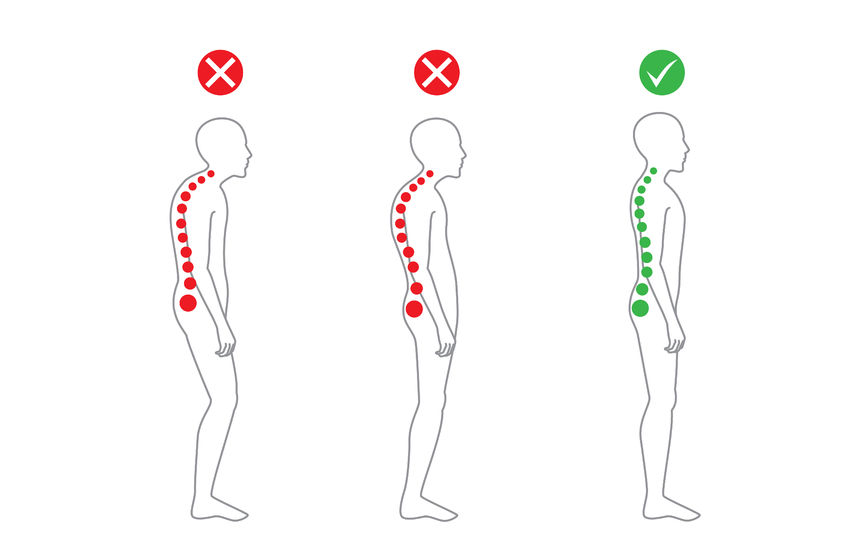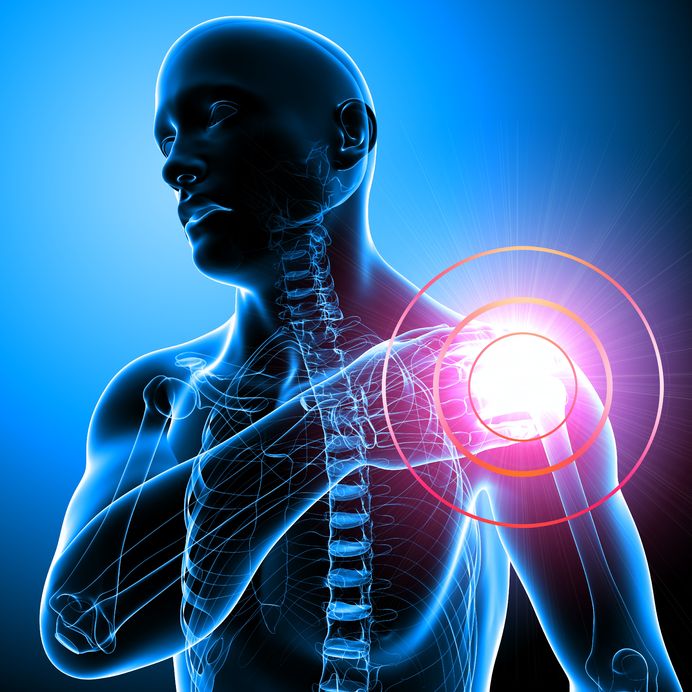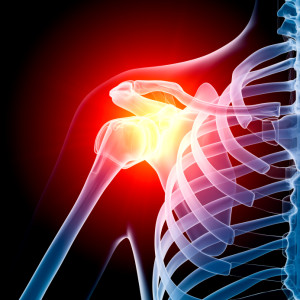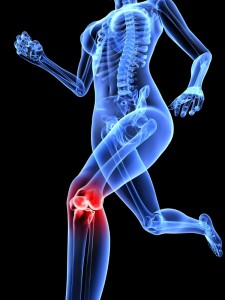As we enter the MLB postseason, many of us are not only in awe of the exceptional athletes who continuously push their physical limits on the diamond, but also inspired by their unwavering commitment to treatment and rehabilitation in the face of injuries. Due to the throwing nature of the sport, shoulder injuries are common in baseball athletes. Additionally, in the general population, these shoulder injuries often stem from the cumulative effects of daily activities, sports, and work-related tasks that place stress on the shoulder joint. It’s important to note that these common baseball shoulder injuries, often stemming from overuse, aren’t exclusive to the pros; they can affect anyone, from the weekend warrior to the devoted Little League player. At AOSMI, we understand that these injuries know no boundaries, and our dedication to delivering top-tier care extends to every individual seeking our expertise. In this article, we delve into the realm of common baseball shoulder injuries, detailing their symptoms and outlining the comprehensive treatment options we offer. Whether you’re a professional pitcher or a dedicated fan, we hope the knowledge we share here can make all the difference when it comes to understanding and addressing these challenging injuries.
Three Common Baseball Shoulder Injuries:
 SLAP Tears (Superior Labrum Anterior to Posterior)
SLAP Tears (Superior Labrum Anterior to Posterior)
- Superior Labrum Anterior to Posterior (SLAP) tears are a frequent concern among baseball players. These injuries affect the labrum, a crucial cartilaginous ring that stabilizes the shoulder joint. Players with SLAP tears may experience symptoms such as persistent shoulder pain, especially during the cocking phase of throwing, a clicking or popping sensation, reduced range of motion, and occasional instability. The discomfort can impact their ability to throw accurately and with power.
Biceps Tendinitis and Tendon Tears:
- Biceps tendinitis involves inflammation of the biceps tendon, which connects the biceps muscle to the shoulder. Over time, this can lead to tendon tears, causing discomfort and limiting performance, particularly in pitching and throwing. Symptoms include a deep ache in the front of the shoulder, pain during overhead movements, weakness when lifting or throwing, and sometimes a noticeable bulge in the upper arm as the torn tendon retracts.
Rotator Cuff Tendinitis and Tears:
- The rotator cuff comprises four muscles and tendons responsible for maintaining shoulder stability. Tendinitis and tears within the rotator cuff are common in baseball players due to the repetitive strain from throwing. Patients often report symptoms like shoulder pain, particularly during throwing or when lifting objects, weakness in the shoulder, limited range of motion, and disturbed sleep due to discomfort when lying on the affected side.
What are Treatment Options for these Common Baseball Shoulder Injuries?
Physical Therapy

Physical therapy is a crucial component of the recovery process for these common baseball shoulder injuries, providing patients with conservative management options to regain strength and mobility. At AOSMI, our physical therapists tailor their treatment plans to your unique injury, ensuring a personalized approach. Although these shoulder injuries are common in throwing athletes, physical therapy is a beneficial option for many of our orthopedic patients, regardless of your physical ability or activity level. As part of comprehensive treatment plan, three common physical therapy exercises that your physical therapist may prescribe are pendulum swings, scapular squeezes, and resistance band external rotations – which are designed to slowly increase range of motion and strengthen the shoulder joint.
Arthroscopic Surgery
Arthroscopic shoulder surgery is a cutting-edge, minimally invasive procedure that has transformed the treatment of various shoulder conditions, including those common in baseball players and the general public experiencing shoulder pain. Here’s a detailed look at this advanced surgical option:
- Procedure Overview – Arthroscopic shoulder surgery involves the use of a tiny camera called an arthroscope and small incisions in the shoulder area. The arthroscope is inserted through one of these incisions, providing a clear view of the inside of the shoulder joint on a monitor. Surgeons can precisely diagnose and treat various shoulder issues without the need for large incisions or extensive tissue disruption
- Diagnostic Capabilities – Arthroscopy allows for a detailed examination of the shoulder joint, including the labrum, rotator cuff, ligaments, and cartilage. This diagnostic precision helps surgeons identify the exact nature and extent of the injury, ensuring a targeted and effective treatment plan.
- Treatment Options – Depending on the diagnosis, arthroscopic shoulder surgery offers several treatment options, such as repairing torn tendons or ligaments, removing damaged tissue, or addressing impingement issues. It can also be used to stabilize the shoulder joint in cases of instability.
- Main Advantages – Arthroscopic surgery for baseball shoulder injuries offers several key benefits: it minimizes tissue disruption, provides precise diagnosis and treatment, and leads to faster recovery times. The minimally invasive approach results in less post-operative pain, smaller scars, and a lower risk of infection. This makes it an excellent choice for both athletes seeking to return to their sport swiftly, and individuals looking to regain their shoulder function, manage pain, and increase mobility.
At AOSMI, our team is committed to providing the highest quality orthopedic and physical therapy care to our patients across New Jersey. If you are experiencing shoulder pain, or any of the symptoms explained above, please request an appointment today. We are dedicated to helping you live a healthier, stronger life.

A revolutionary new treatment called the REGENETEN Bioinductive Implant now offered at Advanced Orthopedics and Sports Medicine Institute (AOSMI) is helping patients with rotator cuff tears heal earlier and faster. As a result, they’re getting back to their active lifestyles quicker than ever before. Even more, the implant helps the body heal itself and stop rotator cuff disease from progressing.
“The results we’re seeing are remarkable,” says Dr. Michael Greller, President and Physician Partner at AOSMI. “This is the biggest advancement in orthopedic shoulder surgery I’ve seen in a long time.”
Rotator Cuff Tears Heal Faster with REGENETEN
Because the surgeons at AOSMI have treated thousands of patients with shoulder pain, they see the difference the patch technology is making. Most noteworthy, patients who get the REGENETEN Bioinductive Implant experience significant pain relief within a few weeks after the procedure. Also, their rehabilitation is shorter and recovery is faster than with other surgical procedures.
“My shoulder patients are reporting much quicker recovery times whenever we were able to use the REGENETEN implant,” says Dr. James Cozzarelli, orthopedic surgeon and Partner of AOSMI.
This patient is Pain Free after Regeneten Implant Procedure
Todd Jakubik, an active 41-year-old dad, had chronic shoulder pain that got so bad he couldn’t do his favorite activities anymore. He tried several pain relief treatments that didn’t last long. Finally, he underwent the REGENETEN procedure performed by Dr. Greller and was soon back to doing the activities he loved.
“Due to the success of my recent shoulder surgery, I can resume activities that I haven’t been able to do in the past year, like surfing, fishing and working out. Most importantly, I can enjoy activities with my 4-year-old daughter. Being able to pick her up and put her on my shoulders is what has meant the most to me,” Jakubik says.
Where Rotator Cuff Tears are Located
Rotator cuff tears happen in the tendons that connect muscle to bone in the shoulder. They can be partial or complete tears. Depending on how severe the tear is, pain can be mild to excruciating and often limits a person’s range of motion. A rotator cuff tear is one of the most common reasons for shoulder pain, sending nearly 2 million people in the United States to visit doctors every year.

How the Regeneten Bioinductive Procedure is Performed
The collagen-based implant is about the size of a postage stamp. Working arthroscopically through a small incision, surgeons place the implant over the location of the rotator cuff tear and then staple it into place. The procedure takes about one and a half hours and patients go home the same day.
Watch this Video that illustrates the Regeneten Bioinductive Implant Procedure
How the REGENETEN Implant Heals Rotator Cuff Tears
The implant is made from highly purified bovine Achiles tendon*. After it is embedded in the tendon, the implant stimulates the body’s natural healing response to facilitate new tendon growth and stop progression of rotator cuff disease. Within six months, the implant is eventually absorbed by the body, leaving a new layer of tendon-like tissue to supplement the existing tendon.
Benefits of the Bioinductive Implant
Prior to the REGENETEN Bioinductive Implant, surgeons didn’t have a minimally invasive option to repair partial rotator cuff tears and stop the progression of rotator cuff disease in its earlier stages. Hence, it becomes increasingly difficult for a surgeon to repair torn rotator cuffs as the disease progresses.
With traditional rotator cuff surgery, tendons are sutured to the bone, which results in more trauma to the body. Consequently, this means a longer rehabilitation, a disruption of lifestyle and variable results.
“With the REGENETEN Bioinductive Implant procedure, we can get better results with a much smaller procedure. This results in less pain and quicker healing,” Dr. Greller says.
How the Regeneten Bioinductive Implant Benefits You
Finally, REGENETEN is a solution that can provide a range of benefits. Even more, it doesn’t matter where you are in the progression of rotator cuff disease. The benefits include:
- Better tendon healing
- Faster pain relief
- Shorter rehabilitation, with less time in a sling
- Quicker recovery, with less physical therapy
- Potential to prevent tears from growing and happening
If you currently are suffering from shoulder pain due to a rotator cuff injury, don’t wait to see your doctor. The expert physicians of AOSMI will get you back to doing the things you love!
CLICK HERE to schedule an appointment today.
* REGENERATES TENDONS. REVOLUTIONIZES INTERVENTION. Smith&Nephew Regeneten Bioinductive Implant

Edward Stoner, MD, a board-certified internal medicine physician on staff at CentraState, has considered team sports as his “gym” for most of his life. A self-proclaimed aging athlete, his interests have ranged from high school football to tennis, golf, and racquetball. But over the past decade, he’s found a new passion in a men’s competitive soccer league based in Freehold.
About five years ago, however, stabbing pain in his right shoulder began interfering with his favorite sport. When the diagnosis was severe osteoarthritis and a rotator cuff tear, Dr. Stoner underwent rotator cuff repair surgery with Gerardo Goldberger, DO, and Alan Nasar, MD, both board–certified orthopedic surgeons on staff at CentraState.
The procedure was a success, but it was likely that at some point Dr. Stoner would need a full shoulder replacement surgery to address the osteoarthritis, which wears away cartilage and joint tissue.
“I felt great for a few years, but the pain eventually returned,” says Dr. Stoner. “Then it became so severe that I couldn’t sleep or fully engage in the sport I love. I had to throw in the ball from over my head during the last spring game, and I nearly collapsed from the pain.”
Regaining Function is the Goal
Knowing it was time to address the problem, Dr. Stoner met with Dr. Nasar to discuss next steps. Because the previous surgery was successful in repairing the rotator cuff, Dr. Stoner was a candidate for a standard SHOULDER REPLACEMENT SURGERY rather than a more complex approach.
“Dr. Stoner’s shoulder replacement was still a highly technical procedure, especially as he had developed a very large bone spur deep within his shoulder that probably contributed to his pain and stiffness,” explains Dr. Nasar. “During the surgery, we carefully cleared out existing bone and cartilage and replaced the joint with fitted artificial components that enable the ball and socket to glide smoothly against each other.”
Dr. Stoner underwent surgery in July, and he returned home the same day. After an initial healing period, he began a course of physical therapy to strengthen his shoulder and enhance mobility. For the first time in years, he‘s now pain–free–and back on the soccer field with no limitations.
“This surgery changed my life,” says Dr. Stoner. “I feel 10 years younger.”
In the past, Dr. Stoner has referred many of his patients for total joint replacement, but having one of his own shed a whole new perspective on the experience. “I’ve always had confidence in my hospital and the doctors here,” he adds. “This experience has not only reinforced that confidence, but it‘s also given me the ability to better educate and empathize with my own patients.”
(Reproduced from CentraState Healthy Directions, Winter 2019 Issue)
Nadine and Dr. Michael J. Greller, MD, CPE, FAAOS discuss her recent shoulder injury and arthroscopic procedure.
Dr. Michael Greller is a board-certified orthopedic surgeon, fellowship trained in sports medicine and President of Advanced Orthopedics and Sports Medicine Institute and is Chief of Staff at CentraState Medical Center.
Learn more about Dr. Greller, see more of Dr. Greller’s testimonials.

Poor posture has many detrimental effects on the body. Individuals often experience chronic pain in the back, neck, and shoulders, digestive issues, stiffness, and fatigue. Poor posture can also lead to nerve compression, muscle atrophy, carpal tunnel syndrome, and sciatica. Although sometimes unnoticed, posture also has a strong impact on the mind, considering people may experience worsened depression and stress, along with tension headaches.
Poor alignment creates ligament and muscle imbalances, which cause many problems. Deviations exist because of the imbalance of muscles, which work together in holding a joint in place. With one tight muscle and one loose one, muscles are pulled away from their rightful positions. Overactive muscles then overcompensate for underactive ones, causing issues and stress on the body.
There are various ways to improve posture, but it is important to understand exactly where alignment is impaired. To determine the postural deviation, one must conduct a standing assessment. During the assessment, which consists of various stances, the overactive and underactive muscles are assessed to discover the strengthening exercises that must be used.
To achieve an upright posture, individuals can follow a few simple steps.
- Step 1: Place feet shoulder width apart.
- Step 2: Stand up straight.
- Step 3: Keep weight on balls of feet.
- Step 4: Keep shoulders square.
- Step 5: Pull head back and up.
These steps can assist individuals who tend to hunch over from poor posture. The greatest challenge is to remain aware of your posture as you go about your day. It is easy to go minutes or hours without realized that you are slumping or slouching. One of the best ways to develop better posture is to be mindful of specific deviations and contact an orthopedic specialist for more assistance.
Shoulder injuries are some of the most common reasons patients seek out help from orthopedic specialists. While many shoulder injuries seem to appear without an apparent cause, athletes who participate in sports with repetitive shoulder movements, such as pitching in baseball, can usually attribute their injury to their sport. At Advanced Orthopedics and Sports Medicine Institute, AOSMI, our team includes a number of experts in shoulder treatment and therapy, joint replacement and shoulder arthroscopy surgery. This wide range of available options means that any shoulder issue, from discomfort and minor inconvenience to a mobility compromising condition, will receive the best available treatment at AOSMI from the most talented staff in the field.
As with any injury, it is important to determine exactly what structures are involved and how severe is the injury. Most common shoulder conditions treated at AOSMI include:
Rotator Cuff Tendonitis, Bursitis and Tears: The rotator cuff is the most important structure involved in lifting and using the arm for overhead activity, opening doors, or repetitive activities such as sweeping or raking.
Labral Tears: The labrum is a stabilizing structure to which the biceps attach. Labral tears causes pain during activities like throwing, reaching with your arm or even sleeping. SLAP tears, labral tears involving the biceps tendon, can often cause pain running down the arm.

Non-operative treatments for shoulder injury
The shoulder injury specialists at AOSMI offer many conservative treatments including rehabilitative care. With our onsite physical therapy center, your shoulder injury specialists works closely with our physical therapists to provide you with a coordinated program of medical and rehabilitation care aimed at getting you back in action. Other conservative treatment options include:
- Manual treatments, such as physical therapy, massage and acupuncture
Steroids and orthobiologics
Non-steroidal anti0inflammatory medications (NSAIDs)
Bracing
Shoulder Surgery Options
When surgery is determined necessary, AOSMI’s Board-Certified, Sports Medicine Fellowship Trained Surgeons are specialized in the most advanced surgical techniques, including minimally invasive, arthroscopic surgery, to offer you the best corrective surgery for your injury. Common surgical procedures include:
Rotator Cuff Tear Repair: Shoulder arthroscopy surgery allows our shoulder surgery specialists to reattach the torn edges of the rotator cuff to the bone with the use of sutures and suture anchors. Rotator cuff surgery has a high success rate, allowing athletes and non-athletes to return to their sports and daily activities faster and stronger.
Labral Tear Repair: Shoulder arthroscopy attaches the labrum back to the bone through a small incision, which should shorten recovery time and reduce pain. Your surgeon will also fix any concurrent biceps injury at the same time as the labrum is reattached. After a successful labral repair, you can return to full activity.
After your injury has healed, it is important to take proper care of your shoulders. Be sure to warm up before any exercise and try to avoid repetitive motions.
If you suffer from pain in your shoulder or are concerned that your shoulder mobility is limited, set up an appointment today with AOSMI’s shoulder specialists – 732-720-2555.
Rotator cuff tears are a common injury in adults–in fact, over 2 million cases of these injuries are diagnosed in the US annually. These injuries are often a source of disability, pain, and weakness. Rotator cuff repair surgery can be a great solution, but it’s not necessarily the correct–or most effective–option for every case. Read on to learn more about some of the deciding factors on what makes a patient a strong candidate for this course of treatment.
Who It’s Best For
Rotator cuff tears can vary greatly in severity and size, and can be caused by trauma, overuse, or just aging. Some can heal with minimum treatment. When considering surgical intervention, it’s always very important to weigh the potential risks against the rewards. Here’s some of what goes into determining whether a patient has a strong chance of benefiting from rotator cuff repair surgery:
- Time After Injury: Rotator cuff repair surgery for damage caused by acute injury tends to be most effective when performed soon after the injury that caused the tear. This is one reason it’s essential to seek medical attention ASAP if you suspect you have a rotator cuff tear–if it’s an injury that could benefit from surgery, you’ll want to have surgery within the first few weeks of sustaining the damage.
- Type of Injury: Surgery isn’t ideal for very large tears, or cases of thinning tendons.
- Failure To Improve With Conservative Treatments: In many cases (especially when the damage isn’t due to acute injury), patients are first prescribed physical therapy to help strengthen the shoulder and allow the damage to heal. If this treatment isn’t effective within 3-6 months, surgery becomes a more serious option.
- Age And Activity Level: Surgery can take a toll. For the elderly or those in poor health, rotator cuff surgery usually presents more risks than rewards, and isn’t a viable option. Rotator cuff repair surgery offers to greatest potential to those who are active, require full shoulder function and strength for their job, and for the young.
- Ability And Willingness to Commit To Rehabilitation: The success of rotator cuff repair surgery hinges on the patient’s adherence to post-surgical rehabilitation. A strong candidate for the surgery should be in adequate shape for surgery and physical therapy. They should also express that they understand the surgery will not be effective without rehabilitation, and that they are committed to the rehabilitation process.
If you are experienced severe shoulder weakness, or have been diagnosed with a possible rotator cuff injury and aren’t sure how to proceed, we encourage you to request an appointment. Our experts will be happy to help you better understand the wide range of treatment options available to you, and to help you find the best solution.
Shoulder injuries are some of the most common reasons patients seek out help from orthopedic specialists. Many shoulder injuries seem to appear without an apparent cause and many patients cannot recall a specific event or injury that may have caused the shoulder pain. At AOSMI, our team includes experts in shoulder evaluation, diagnosis, and treatment. This wide range of available options means that any shoulder issue, from discomfort and minor inconvenience to a mobility-compromising condition, will receive the best available treatment at AOSMI from the most talented staff in the field. If surgery is needed, our surgeons are trained in the most advanced minimally invasive arthroscopic techniques, which gets you back faster and better, with less pain.
As with any injury, it is important to determine exactly what structures are involved and how severe is the injury. Orthopedic surgeons at AOSMI treat the following conditions most often:
Rotator Cuff Tendonitis, Bursitis and Tears – The rotator cuff is the most important structure involved in lifting and using the arm for overhead activity, opening doors, or repetitive activities such as sweeping or raking. Painful and debilitating, rotator cuff inflammation and injuries, can be treated with a variety of non-invasive techniques and when necessary, minimally invasive arthroscopic reconstruction.
Labral Tears – The labrum is a stabilizing structure to which the biceps attaches. When injured, a labral tear will cause pain and difficulty. Activities such as throwing, reaching with your arm, or even sleeping, can be painful whether caused by shoulder dislocation or another injury. Labral tears involving the biceps tendon are called SLAP tears and can often cause pain running down the arm.
Non-operative Treatments for Shoulder Injury
The shoulder injury specialists at AOSMI offer many conservative treatments including rehabilitative care and ancillary treatments. With our onsite physical therapy center, your shoulder injury specialist works closely with our therapists to provide you with a coordinated program of medical and rehabilitation care aimed at getting you back in action.
Non-operative treatment options include:
- Manual treatments, such as physical therapy, massage and acupuncture
- Bracing
- Non-steroidal anti-inflammatory medications (NSAIDs)
- Steroids, orthobiologics, and other injections
Shoulder Surgery Options
AOSMI’s Board-Certified, Sports Medicine Fellowship Trained Surgeons are specialized in the most advanced arthroscopic minimally invasive surgical techniques to offer you the best corrective surgery for your injury. When surgery is determined necessary, the typical procedures include:
Rotator Cuff Tear Repair – Shoulder arthroscopy surgery allows our shoulder surgery specialist to reattach the torn edges of the rotator cuff to the bone with the use of sutures and suture anchors. Rotator cuff surgery has a high success rate when it comes to rotator cuff treatment options, allowing athletes and non-athletes to return to their sports and daily activities faster and stronger.
Labral Tear Repair – Shoulder arthroscopy attaches the labrum back to the bone through a small incision, which should shorten recovery time and reduce pain. At the same time as the labrum is reattached, your surgeon will fix any concurrent biceps injury. After a successful labral repair, you can return to full activity.
If you’ve recently had a shoulder injury or have unexplained discomfort, contact the shoulder orthopedic doctors at AOSMI. There is no reason to go on living with pain when the right treatment is just waiting for you. Call and schedule your appointment today – 732-720-2555!
 Shoulder injuries are some of the most common reasons patients seek out help from orthopedic specialists. Many shoulder injuries seem to appear without an apparent cause: many patients report shoulder pain without being able to recall a specific traumatic event or injury. At AOSMI, our team includes a number of experts in shoulder therapy and treatment, joint replacement, and shoulder arthroscopy surgery. This wide range of available options means that any shoulder issue, from discomfort and minor inconvenience to a mobility-compromising condition, will receive the best available treatment at AOSMI from the most talented staff in the field.
Shoulder injuries are some of the most common reasons patients seek out help from orthopedic specialists. Many shoulder injuries seem to appear without an apparent cause: many patients report shoulder pain without being able to recall a specific traumatic event or injury. At AOSMI, our team includes a number of experts in shoulder therapy and treatment, joint replacement, and shoulder arthroscopy surgery. This wide range of available options means that any shoulder issue, from discomfort and minor inconvenience to a mobility-compromising condition, will receive the best available treatment at AOSMI from the most talented staff in the field.
Two of the most common shoulder surgeries performed by AOSMI professionals are rotator cuff repair and labral tear repair. The rotator cuff is the primary structure responsible for lifting the arm above the head for overhead activity. Damage to the rotator cuff can inhibit the entire arm’s function and does not typically heal on its own. Thankfully, rotator cuff surgery to correct the damage has a high success rate and regularly restores athletes and everyday people to full mobility. Another common shoulder condition treated by surgery is labral tears. A tear in the labrum, which encircles the shoulder joint and provides additional stability, can cause pain and difficulty with tasks like reaching out the arm and throwing handheld objects. As with rotator cuff repair surgery, labral tear surgeries are frequently successful in treating damage that would not otherwise naturally heal.
Our body’s joints are among its most important features. Connecting the body’s bones to facilitate healthy locomotion, joints enable a high degree of mobility and allow us to complete everyday tasks and enjoy active recreation. Though highly capable, joints are delicate and require careful maintenance to stay in optimal condition. The wear and tear of regular motion as well as the toll of aging and the risks posed by injury can all restrict or reduce the function of the body’s joints. The orthopedic specialist team at Advanced Orthopedic and Sports Medicine Institute regularly performs procedures to restore joint function and address joint-related concerns. While these procedures are expertly carried out, prevention is the most straightforward way to keep joints in good health.
Weight is a prime cause of joint issues: keeping weight within a healthy range is one of the best things a patient can do for his or her joints. Exercise can help patients manage weight as well as address joint issues on its own: aerobic exercise can reduce joint swelling. Low-impact exercises, such as swimming or biking, can provide this benefit without stressing joints with unnecessary impact. Finally, building muscles with strength training exercises helps to support the joints those muscles surround. This alleviates the burden the body’s joints constantly bear.
Joint health is a major specialty of many doctors at AOSMI, including Dr. James F. Cozzarelli, MD, FAAOS. Dr. Cozzarelli is trusted by his patients to share his insight and explain his specialist knowledge clearly to everyone he can help. Visiting his site or getting in touch with AOSMI are great next steps for those who want to keep their joints in top condition throughout their lives.










